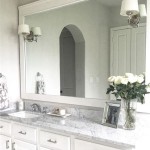Types of Truck Mirrors: A Comprehensive Guide
Truck mirrors are critical safety components that significantly enhance driver visibility, particularly given the size and blind spot complexities associated with commercial vehicles. These mirrors are not merely cosmetic additions; they are essential for safe maneuvering, lane changes, reversing, and navigating complex traffic situations. Understanding the various types of truck mirrors and their specific functions is paramount for both drivers and fleet managers to ensure optimal safety and regulatory compliance.
Federal Motor Carrier Safety Administration (FMCSA) regulations mandate that all commercial vehicles meet specific mirror requirements to minimize blind spots and provide drivers with a comprehensive view of their surroundings. Failure to comply with these regulations can result in fines and jeopardize overall safety. This article will delve into the different types of truck mirrors, explaining their functionalities, benefits, and common applications.
Main Types of Truck Mirrors
The range of truck mirrors available is quite diverse, each designed to perform a specific task and cover a particular blind spot. The most common types include flat mirrors, convex mirrors, spot mirrors, and specialized mirrors such as West Coast mirrors and heated mirrors. The following sections will describe these mirrors in detail.
Flat Mirrors: Flat mirrors are a fundamental type of truck mirror, typically mounted on the doors and providing a realistic, non-distorted view of the adjacent lanes. Their primary function is to offer a clear representation of the immediate surroundings, allowing drivers to accurately assess distances and relative speeds of other vehicles. Unlike convex mirrors, flat mirrors do not widen the field of view, but they provide a more accurate perception of depth and size. This is essential for making informed decisions when changing lanes or merging into traffic.
The positioning of flat mirrors is crucial. They must be adjusted correctly to provide the driver with a complete view of the lane beside the truck, as well as a portion of the horizon. Adjustments should be made before each trip to account for any changes in the driver's seating position. Additionally, regular maintenance is necessary to keep the mirror surfaces clean and free from damage, ensuring optimal visibility in all weather conditions.
Convex Mirrors: Convex mirrors are characterized by their curved surface, which allows them to reflect a wider field of view compared to flat mirrors. This wider perspective is exceptionally valuable in reducing blind spots, particularly those located along the sides and rear of the truck. By expanding the visible area, convex mirrors enable drivers to detect vehicles, pedestrians, and other potential hazards that might otherwise go unnoticed. These mirrors are often positioned below or beside flat mirrors and are essential for safe maneuvering in tight spaces and during lane changes.
However, the extended field of view comes at a cost: objects viewed in convex mirrors appear smaller and farther away than they actually are. This distortion can make it challenging to accurately judge distances and speeds. Therefore, drivers need to be aware of this effect and exercise caution when relying solely on convex mirrors. Some convex mirrors are also made with a coating to reduce glare, which enhances visibility in adverse weather conditions.
Spot Mirrors: Spot mirrors, also known as blind spot mirrors, are small, round convex mirrors designed to eliminate the remaining blind spots that are not covered by flat or standard convex mirrors. These mirrors are typically mounted on the corners of the side mirrors and offer a close-up view of the immediate surrounding area. Spot mirrors are particularly useful for detecting smaller vehicles, motorcycles, and pedestrians that may be hidden in the blind spots.
The strategic placement of spot mirrors is essential for maximizing their effectiveness. Drivers need to position these mirrors so that they provide a clear view of the areas immediately adjacent to the truck, without obstructing the view of the main mirrors. Spot mirrors are often adjustable, allowing drivers to fine-tune their position to suit their individual needs and preferences. The small size and magnified view require practice to interpret the relative distance and speed of vehicles seen in them.
Specialized Truck Mirrors
In addition to the standard flat, convex, and spot mirrors, there are several specialized types of truck mirrors designed to address specific visibility challenges and environmental conditions. These include West Coast mirrors, heated mirrors, and motorized mirrors.
West Coast Mirrors: West Coast mirrors are large, rectangular mirrors that extend further from the truck's cab, providing an extended field of view. These mirrors typically combine a flat mirror section with a convex mirror section, offering both a realistic view of adjacent lanes and a wider perspective of the surrounding area. West Coast mirrors are highly valued for their robustness and durability, making them well-suited for long-haul trucking and challenging road conditions. Their larger size makes them more visible and easier to adjust, even while wearing gloves.
The extended reach of West Coast mirrors helps to minimize blind spots and allows drivers to monitor traffic conditions more effectively. However, their size and placement can also make them vulnerable to damage from impacts with trees, signs, or other vehicles. Regular inspection and maintenance are essential to ensure that these mirrors are functioning correctly and providing optimal visibility.
Heated Mirrors: Heated mirrors are equipped with heating elements that melt ice, snow, and frost from the mirror surface, ensuring clear visibility in cold weather conditions. These mirrors are particularly valuable in regions with harsh winters, where ice and snow can quickly accumulate on the mirrors, severely limiting visibility and posing a significant safety hazard. The heating element is usually activated by a switch inside the cab, allowing drivers to quickly clear the mirrors when needed.
Heated mirrors not only enhance safety but also improve driver comfort and convenience. By eliminating the need to manually scrape ice from the mirrors, these mirrors save time and effort, allowing drivers to focus on the road. Regular maintenance is required to ensure that the heating elements are functioning correctly and that the mirror surface is free from damage. Also, drivers should be mindful of energy consumption when using heated mirrors to avoid draining the truck's battery.
Motorized Mirrors: Motorized mirrors offer the convenience of remote adjustment, allowing drivers to fine-tune the mirror position from inside the cab. This is particularly useful for making adjustments on the fly, without having to stop the truck or manually adjust the mirrors. Motorized mirrors can be especially advantageous for drivers who share trucks or who frequently adjust their seating position.
The remote adjustment capability enhances both safety and convenience while driving. Drivers can quickly adapt to changing road conditions or adjust the mirrors to compensate for variations in load or traffic. Motorized mirrors are also less prone to damage from manual adjustments, as the internal mechanisms are protected from external forces. However, they are more complex than manual mirrors, which can make them more expensive to repair or replace.
Mirror Maintenance and Adjustment
Proper maintenance and adjustment of truck mirrors are essential to ensure optimal visibility and safety. Regular cleaning, inspection, and necessary repairs should be part of a routine maintenance schedule. Drivers should check the mirrors before each trip to ensure that they are clean, properly adjusted, and free from damage.
Cleaning the mirror surfaces regularly is crucial for maintaining clear visibility. Dirt, grime, and road spray can accumulate on the mirrors, significantly reducing their effectiveness. Use a mild detergent and a soft cloth to clean the mirrors, avoiding abrasive cleaners that can scratch or damage the surface. In winter months, use a specialized de-icing solution to remove ice and frost. Drivers need to be very gentle to avoid damaging the mirror's reflective surface.
Mirror adjustment is another critical aspect of mirror maintenance. The mirrors should be adjusted to provide the driver with a comprehensive view of the surrounding area, minimizing blind spots and allowing for safe maneuvering. The flat mirrors should be positioned to show a clear view of the adjacent lanes, while the convex mirrors should provide a wider perspective of the sides and rear of the truck. The spot mirrors should be adjusted to eliminate any remaining blind spots. Different drivers will need to adjust mirrors to their personal preferences and driving styles.
Inspecting the mirrors for damage is also essential. Cracks, chips, and other forms of damage can impair visibility and compromise the mirror's functionality. Damaged mirrors should be repaired or replaced promptly to ensure optimal safety. Mounting hardware should also be checked to ensure that the mirrors are securely attached and properly aligned. Vibrations from driving and wind can loosen the bolts and screws, leading to misalignment and potential damage to the mirrors. Regular inspections of the mounting hardware help identify any potential issues, and tightening loose bolts and screws prevents further damage.
Regulations regarding mirror placement vary from state to state, so drivers need to be up-to-date on the regulations for any state where they are driving. Adhering to these regulations helps ensure that mirrors are positioned optimally and provide the necessary field of view. FMCSA regulations also play a role in determining the standards for mirror placement on commercial vehicles. Failing to meet these requirements can result in fines and other penalties. Regularly reviewing and adhering to federal and state regulations ensures compliance and fosters a safe driving environment.

The Types Of Semi Truck Mirrors
Type 8 Mirrors Ford Truck Enthusiasts Forums

Why The Side Mirrors Majorly Of All Heavy Vehicles Are Small In Size Quora

Mirror And Direct Fields Of View In One Truck Scientific Diagram

Retrac Information
Side View Mirror S Ford Truck Enthusiasts Forums

Universal Wide Angle Mirror Retractable Straight Van Type Stainless Steel Velvac

Side Mirrors Universal Type For Trucks At Best In Meerut

Truck Mirrors Sold As A Pair T65790 Oem 281857547k Type 25 Door Tailgate Engine Lid Cover Pick Up Parts Custom Commercial

Truck Mirrors Sold As A Pair T65787 Oem 281857547k Type 25 Door Tailgate Engine Lid Cover Pick Up Parts Custom Commercial








